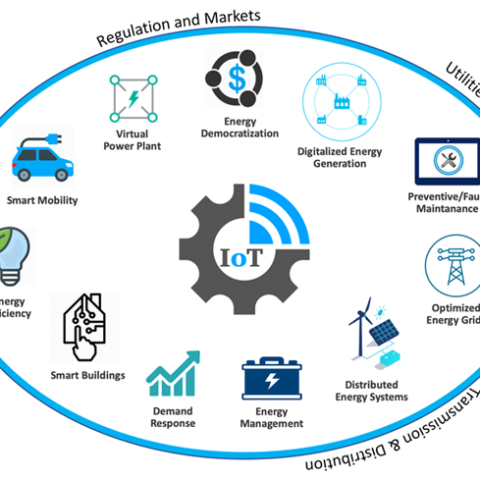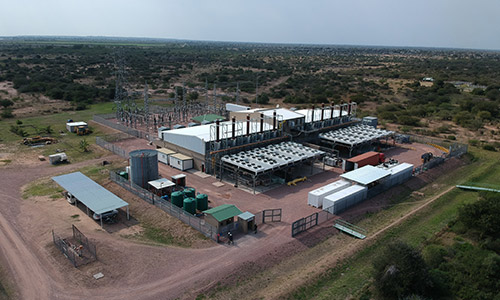Energy storage systems such as batteries are frequently paired with solar installations today.
Some solar owners may not want to include batteries in their projects, however, the main argument against their inclusion is the relatively high expense and the fact that batteries have been getting cheaper year-on-year, so why not wait?
These arguments are based on the overall LCOE (Levelized Cost of Energy) over the battery system's life, which has been dropping substantially over the years. We have discussed this in our blog posts Can Battery Costs Be Justified With Energy Price Arbitrage? and Hybrid Solutions: The Cost-Effective Answer To Flexible, High Demand Energy Needs .
However, the era of lower battery prices may now be coming to an end with rampant inflation taking hold in many economies. Supply chain complications are also a significant factor.
The author’s chart below shows the steady rise of commodity prices in response to these pressures:

Source: Author’s work from TradingView.com
This trend does not bode well for lower future prices as the exchange-traded security shown (the Invesco DB Commodity Index Tracking Fund) follows future contracts on 14 of the most heavily traded and important physical commodities in the world. These commodities include crude oil and natural gas as well as silver (used extensively in solar panels) and base metals including zinc, aluminum and copper.
Energy prices and raw materials prices are input prices for all manufacturing processes and will raise the cost of end products including batteries.
Even more to the point, here’s another chart for lithium carbonate, a vital component of lithium-ion batteries:

Source: TradingEconomics.com
The uptrends are obvious and are unlikely to reverse as money supply, geopolitical factors, and supply chain challenges look likely to continue for some time.
Do the expected higher costs form a new and stronger price argument against buying batteries for your solar system?
We don’t believe so. After all, someone is going to be paying those higher energy and materials prices and passing on their costs to the end user. Therefore buying batteries now, rather than later, may insulate you from exorbitant electricity or asset cost increases over the long term.
That’s why today’s prices should not be a deterrent, especially when they offer so many strategic advantages.
What Benefits Do Batteries Offer?
The benefits of incorporating batteries into your solar system are many. Here are some of the most important to most owners and operators:
Blackout Protection and Energy Independence: A grid-tied solar PV system produces clean energy during daylight hours with excess power fed back into the grid. But during an outage, energy stored in the PV-linked battery system will provide near-instantaneous backup power to keep critical processes operational.
Load Shifting and Demand Reduction: The time of use (TOU) tariff common to commercial or industrial facility users charges different kWh rates depending on the time of day and time of year. A battery system allows the operator to move energy consumption from peak tariff hours to reduce demand and lower costs.
Energy Trading or VPP Programs: Technology advances have facilitated opportunities to export excess power into the grid and sell it at a premium. Smart grids and local software can help maximize profits by measuring your system’s energy consumption history while considering variables such as the weather, grid demand, and future energy prices.
Avoided Costs: Batteries may defer or even eliminate future asset investments such as additional wind and solar farms, natural gas power plants or other generators, and transmission lines. This includes avoiding the fuel and maintenance costs associated with gas-fired power plants. However, batteries do need to be replaced after several years of use and this cost must be weighed against savings in other areas.
Battery systems can take advantage of more than one benefit at a time.
For example, most battery installations rely on complex, stacked revenue streams rather than just one. Availability payments, services payments, capacity payments, performance payments, arbitrage, and avoided costs all give a project more flexibility and ensure a properly coordinated energy storage system.
Such a system ensures the benefits more than compensate for the higher initial capex costs. We discuss how battery systems generate value in more detail in Can Battery Costs Be Justified With Energy Price Arbitrage?
Why Lithium Ion Batteries?
You may also be wondering why we prefer lithium-ion batteries over lead-acid batteries for solar battery installations. Li-ion advantages include longer lifespans, higher efficiency, no maintenance, greater storage capacity, and no gas emissions under normal operation.
This comparison chart between deep cycle lead-acid batteries and lithium-ion batteries should make this clear:

Source: Modified from a table at Battery University
Li-ion batteries are also approximately 30% lighter than lead-acid systems and take up comparably less floor space.
Taken together, these advantages more than offset lithium-ion’s higher cost and make them the best batteries for solar power systems.
As for the two different lithium-ion chemistries in the table, each offers separate trade-offs.
The most common chemistry is Lithium Nickel Manganese Cobalt Oxide which is typically abbreviated to “NMC” for convenience. NMC chemistry is used in the LG Chem Resu and the Tesla Powerwall solutions due to its relatively high energy density. This means it can store more energy at the expense of an average power output.
Cobalt makes NMC batteries very safe and reduces the risk of thermal runaway.
Meanwhile, Lithium Iron Phosphate (LFP) is a lower-cost chemistry used by sonnen and SimpliPhi. LFP has a higher power rating but a lower energy density. The iron in LFP chemistry improves safety and reduces heat output, meaning less ventilation and cooling is needed in LFP installations.
Additionally, LFP chemistry batteries tend to have longer lifespans than most other lithium-ion batteries. Which chemistry is used at a given installation depends on the energy, power, and cost parameters of the project in question.
Now we can address how these batteries can be coupled with solar projects to deliver the expected benefits.
Solar Battery System Sizing and Coupling
Solar batteries must be sized for their expected multiple use cases and optimized for their expected cycle lifetimes. This means careful planning and design is essential.
All too often, batteries are undersized to save upfront costs or because system loads were underestimated. This must be avoided with a proper design that incorporates system requirements as well as appropriate stacked revenue streams.
Another critical consideration is the cycle life of the battery, which is simply the number of discharge-charge cycles the battery can sustain before its capacity drops significantly.
A battery system with greater capacity will undergo fewer cycles and should therefore have a longer expected lifespan than one with smaller capacity. On the other hand, the higher capacity system will cost more upfront.
A properly designed system will consider this very important cycle factor, which is highly dependent on the specific battery lithium-ion chemistry used, the operating environment (especially temperature), and use cases.
Once an appropriate size is determined, there are essentially two main types of installations: Direct Current (DC)-coupled and Alternating Current (AC)-coupled batteries.
A DC-coupled battery needs to be connected to a hybrid inverter, which is a battery charger and inverter combined. The DC power from the solar panels feeds directly into the battery via the DC battery charger. Then the battery returns DC power to the inverter to produce AC for the load.

Source: ADC Projects
DC coupled system advantages include up to 95% to 97% battery charging efficiency, low-cost setups for small systems, scalability, and high efficiency for DC appliances and loads.
Their disadvantages include added complexity and costs for large setups as well as lower efficiency when powering AC loads.
On the other hand, an AC-coupled battery system feeds the DC produced by the project’s solar panels through an inverter which converts it into AC for immediate use while also directing power into the battery’s separate inverter system for conversion back to DC, storage and later use.

Source: ADC Projects
Tesla Powerwalls are a good example of this type of system. They accept AC current from the solar inverter and store it inside the battery component using a in-built rectifier/inverter which converts some of the AC current back to DC so it can charge the battery itself.
The advantages of AC coupled systems include higher efficiency when used to power AC appliances and the ability to use multiple solar inverters at different locations to create microgrids.
Their disadvantages also include a slightly lower efficiency when charging (as much as 7% lower than a DC system), more expensive inverters, and lower efficiency when powering direct DC loads.
Which coupling to select depends on the intended use case for the overall system. A primarily DC load is best served by a DC-coupled system while an AC-coupled system will function best with AC loads.
Final Considerations
Designing and installing a battery storage system increases complexity as compared to a solar-only system. More things can go wrong at the design, installation and operation phase.
Maintenance costs also increase as battery systems must be located in cool environments with adequate ventilation.
Also be aware that you will have to replace the battery system at least once during the lifespan of your solar system, depending on the type of battery and battery chemistry used.
Is the extra expense worth it?
TOU tariffs or frequent blackouts could be the deciding factors. Higher future costs due to inflationary pressures should also be considered. Even public relations aspects could count if you wish to project a low-carbon, environmentally friendly image that resonates with the public better than diesel (or even natural gas) powered generators.
How ADC Projects Can Help
We sell energy market expertise to commerce and industry, including both big and small hybrid solutions. We provide Project Development, Project Management Operations and Maintenance, Engineering and consulting services to develop and install a variety of power projects including solar PV with optimized battery couplings.
We operate in numerous countries including Portugal, South Africa, Mozambique, Kenya, the DRC, Lesotho, and Namibia.
Managing risk and developing much-needed energy projects is a key part of our expertise.
To learn more about assessing project liabilities and hazards, becoming less dependent on utility power, saving time and money and gaining a real advantage over your competition, please contact us today.










